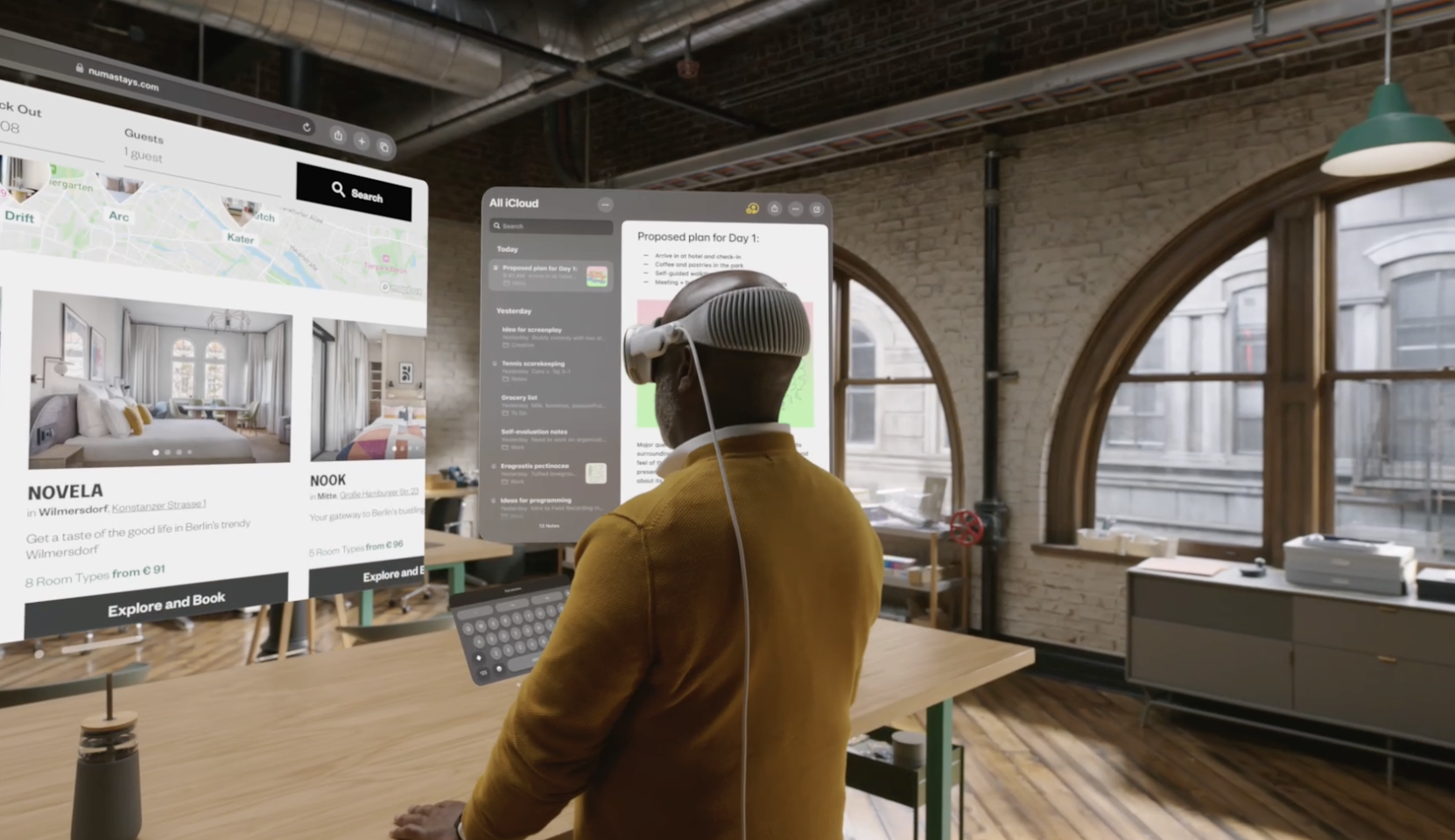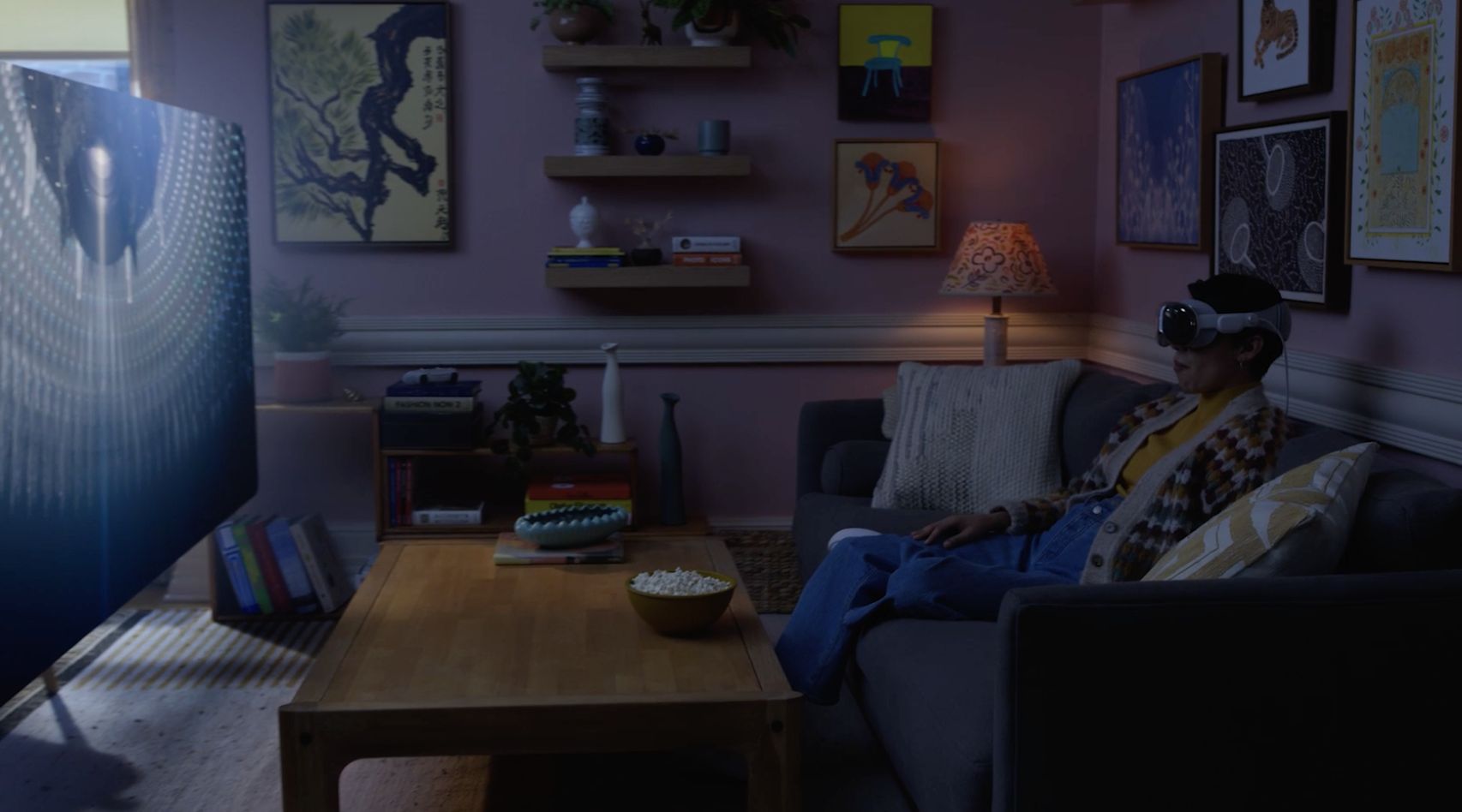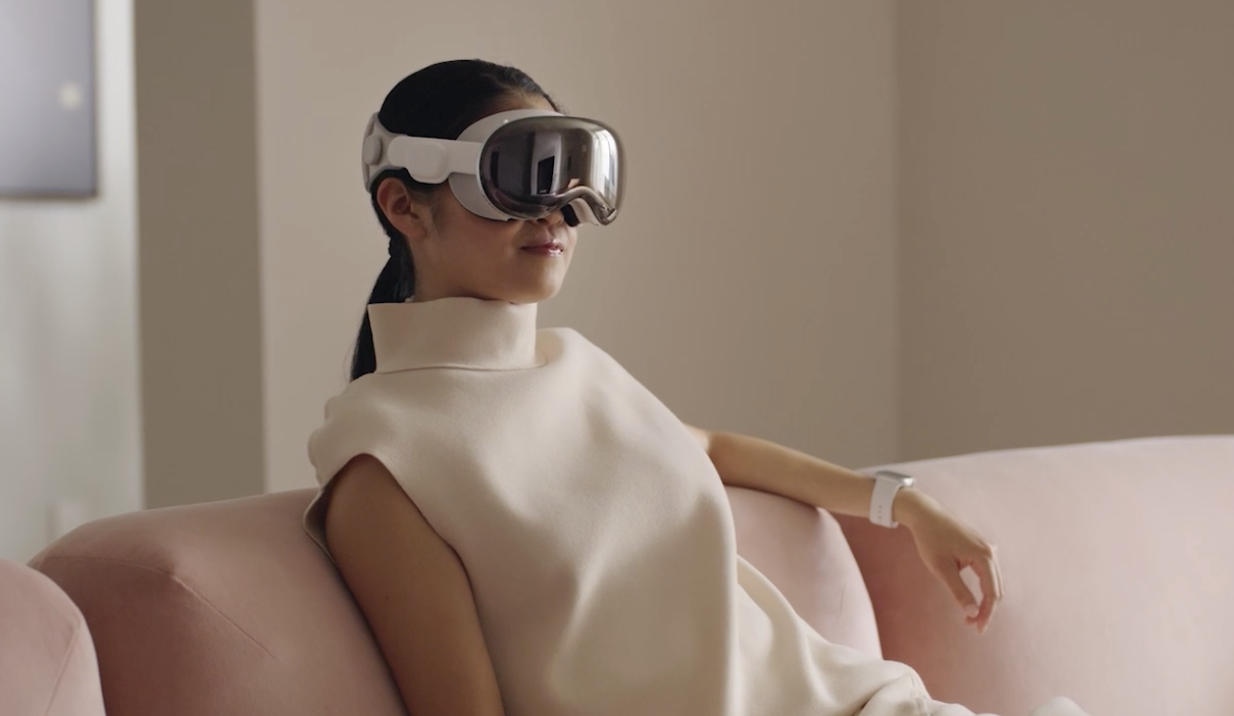Knowledge Base
27th April 2024
Apple Vision Pro: a game-changer for XR?
As US pre-orders for the Apple Vision Pro have now opened (and subsequently sold out) we thought it would be a good time to revisit what we think this headset means for the immersive tech industry and where this supremely expensive headset sits in the pack of available options.
What’s Apple’s end-game?
When discussing the Vision Pro it’s really important to understand what it's intended to be, and what it isn’t. As their first entry into the Immersive Tech/Wearables sector, The Vision Pro represents a few things for Apple. On a simple level, it's their attempt to define (in their view) what the strengths of the tech are, and how people should use it. Apple sees this device as a new computing platform – for them it’s not something you put on just to play games or watch videos (although it can totally be used for that), but also as something you spend serious productivity time with, doing all the things you’d do with a phone, tablet or MacBook.
This means they expect Vision Pro users to be answering emails, taking video calls, organising photos, posting to social media, answering iMessages and Slack messages, and creating and consuming content. As such Apple also expects their users to wear these devices for extended periods of time, hence the unusual move of adding options for prescription lenses and two head strap versions. It will be a primary goal for Apple to establish the idea that the Vision Pro isn’t just another (very expensive) VR headset, but a computing and communication tool in the same vein as a laptop or iPhone. This is a very different vision from Meta, Microsoft, Google and Valve.

Getting devs on-board
As a first version, this device also has another important job to do for Apple. It will effectively be serving as Apple’s first widely available visionOS dev-kit; a chance to put hardware and software in the hands of developers and early adopters. How this device fares as a development tool will be critical for Apple. Apple needs to walk the fine line of keeping developers ‘on-script’ with their primary goals and leveraging the strengths of the device, whilst also allowing them to be creative and build new and exciting categories of software and experiences. If they’re too restrictive, Apple could easily choke off any excitement developers and early adopters have for the platform, causing it to die on the vine from lack of software and buzz.
Apple understands that to build developer confidence and nurture a growing user base, they will need to commit to the platform. They will need to provide a road-map which looks years forward and instil confidence that they won't abandon the platform if uptake is slow. This is something that they have a good track record with in recent times, and it's likely that nothing short of total non-adoption will cause Apple to throw in the towel.
Apple is also incredibly good at building tools and infrastructure to support massive application ecosystems. This is something that Google, Microsoft and Meta have largely failed to do effectively with their own Extended Reality (XR) offerings, preferring instead to fall back to third party game-engine support (Unity, Unreal, etc) for content creation. Armies of non-XR developers will now have an XR capable platform on which to deploy their applications using tools and API which are already very familiar.

The start of something big
This Vision Pro is an expensive product, but it's important to note that it's not intended as a mass consumer product (or at least not yet). This device is a chance for Apple to get developers interested, get early adopters and influencers buzzing, and establish the Vision platform as a new way of thinking about what productivity in mixed reality should look like. And while they’re doing all these things, they’ll be working on the next generation which will almost certainly be lighter, cheaper and (if all goes well) will launch with more apps and content.
In summary, people shouldn’t be thinking about the Vision Pro with regards to how it directly compares with say the Meta Quest 3 or Microsoft Hololens 2. Apple hopes that this device will carve out its own category and, in doing so, it (and its successors) will become much more embedded in people’s day-to-day lives. It seems Apple sees this more as a work and productivity device than as an entertainment device. Apple wants to get to a world where you switch seamlessly between your iPhone, iPad, MacBook and Vision without skipping a beat. Seen in that light, the Vision Pro is not just a headset but a stepping stone to an entirely new product class – and an opening move in a strategy which may take many years to play out.
As for us, we’re eagerly waiting to get our hands on our own Vision Pro very soon. It goes without saying that we’re super excited to explore the new possibilities it will open up, and get started on some seriously exciting projects!
Drop us a line if you’re interested in what the Vision Pro could mean for you. Contact us here

James has over two decades’ experience in highly technical roles – from the main IT agency of the British Government to digital marketing. He’s led development teams in three different agencies, plus worked as a freelance developer and consultant. His love of all things tech led James to co-found Infinite Form in 2015. When he’s not playing with computers, James is usually playing bass.



